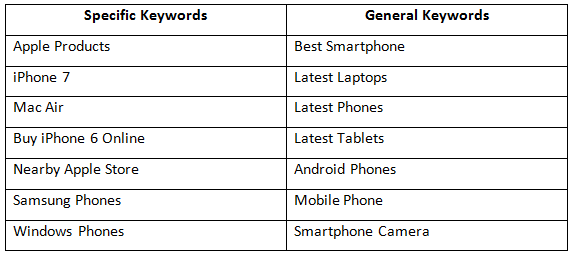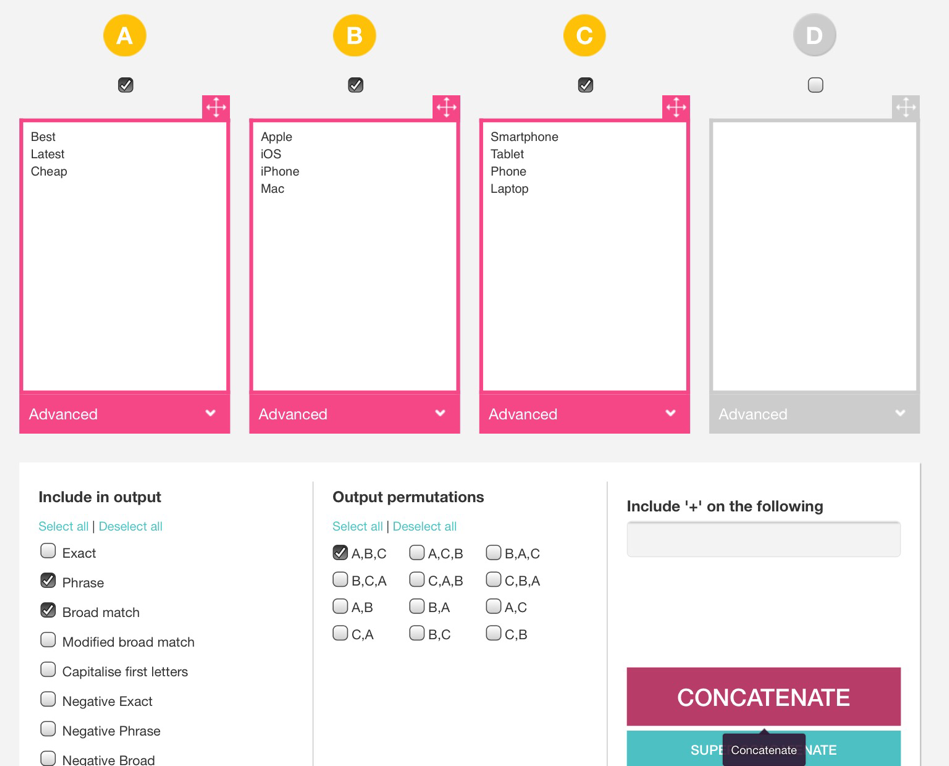Understanding Keywords your Target Audiences would Be Searching for
Continuous research and refinement of a business’s PPC keyword list is as important as continuous updating of target audiences’ persona profiles. Both these aspects are inter-related and one helps in fetching relevant information for the other. So, now that you have built your persona profiles, it will be easier for you to come up with a comprehensive PPC keyword list. As you know which people to drive to your website, you will be in a better position to understand which keywords would they be searching for. Remember to remain persistent as PPC keyword research is going to be a highly time consuming process with enlisting even more than thousands of valuable, low cost, and relevant keywords.

In order to make possible they highly targeted and effective pay-per-click campaigns, its is essential to acquire and organise right keywords. Following are the steps that will help you come up with the keywords that are relevant to your audiences.
Understand and implement the following 5 C’s of keyword building and make sure you never go wrong with keywords for your PPC campaign:
- Keyword Categorisation
For any brand in any industry, there are 2 keyword categories, specific and general, which will contain the most appropriate of the keywords.
Specific category will contain keywords, directly related to your brand and your competitors. These keywords will be most searched for seasoned buyers and audiences who know exactly what they are looking for.
Another category is that of general keywords. Now, that you have better understanding of your audiences, it will be easy to come up with the general category. Here, such keywords will come which your audiences will search for the most when they want to explore maximum options and have not made their mind on what type/ model to buy.
Let’s take the example of world’s top brand, Apple.
Here is how Apple’s chart for keyword categories will look something like this:

- Keyword Conceptualisation
Now that you know about your keyword categories, let us see how to fill these two categories up. Your major aim is to make your target audience reach your website. For this, put yourself in your audiences’ minds and think what keywords would they be typing on the search box to reach to you.
You need to fill in the specific categories as it will be easier to do. Along with your latest products and your company’s name, do not forget to leverage upon the keywords with the names of your competitors , as well. A word of caution – keywords with the names of competitors are usually expensive. So, always bid for them if you have enough financial backing.
For filling in the general category, make sure you do not go too general. The rule is to move from a generic term to something more definite. For example, phones -> latest phones -> latest iOS phones
#NEWS | Paid search marketing can lead to a better #website experience.https://t.co/fxWk2uHUbO#PPC #SEO #USA #UK #Australia #Blog pic.twitter.com/0V6Qc3js6t
— Skynet Technologies (@skynetindia) January 13, 2017
- Keyword Concatenation
By this stage, you have already come up with many keywords. Now, important task is to create keyword phrases. This can be a tiring and time-consuming task as thousands of combinations can be possible with even a limited set of keywords. Even missing one type of phrase combination can be bad for your PPC campaign as you might be missing on a large chunk of audiences, that way. So, a good way is to use special keyword concatenation tools like Syntactics, Found, and Keyword Machine.
For example, we tried how various combinations of keywords are made possible with Found. In the following chart, we filled in relevant keywords for Apple within the three columns:

In the following chart, see how we got 48 combination of keyword phrases in a few seconds. We got all possible permutations of 11 terms that we put in:

- Keyword Cancellation
In the broad list of your keywords, you will find there are many negative keywords, as well. These keywords can put you beside ad queries which are offensive or irrelevant. So, these are such keywords which you do not want your ads to show up in search for. For example, Apple would never want its website to come up when someone puts keywords like ‘cheap’ or ‘sale’ in the search bar. Even the keyword like ‘fruit’ would also be highly inappropriate for Apple company. So, these are the keywords it would like to cancel.
Ascertain negative keywords for your brand as these can make your PPC ad less relevant, while costing you more. You can use special tools for finding negative keywords, like WordStream’s Negative Keyword Tool which is free to use.
Then, you need to put these keywords in the negative keywords tab in Google Adwords so that Google knows to never show your ad when such a keyword is being searched for.
Calculating Your Costs When Starting on Pay Per Click Advertising (PPC) in Australia https://t.co/z3AJUWR4gI pic.twitter.com/i0EBs80e8W
— daWorksSydney (@daWorksSydney) February 8, 2017
- Keyword Confusion
Remember the times when you misspell some word on search bar and hit search? It happens with many people. So, it is also essential to add closely misspelled words for your keywords in your PPC campaign, as well. You can use online tools to create possible typos and misspelling combinations for your keyword phrases. We used SEO Book and got the following results:

Keyword building and updating are very essential tasks for any PPC campaign but task is half done. You now need to study your competitors to better equip yourself before entering the market. In the next step of series, learn how to evaluate and understand your competitor ads, landing pages, and website.
Ash Ganda



